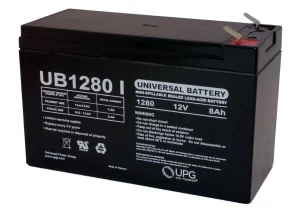How to Properly Maintain Lead Acid Batteries for Ham Radio?
Lithium-ion Polymer (LiFePO4)
Lighter and more durable option for ham radio batteries
A car battery may not be the best choice for powering a ham radio due to its limitations. While car batteries can recover from deep discharge multiple times, they are not designed for frequent deep cycles and are not ideal for HAM radio use. They are also not suitable for SIL (insert the meaning of SIL here).
On the other hand, lithium-ion polymer (LiFePO4) batteries offer several advantages for ham radio enthusiasts. They are lighter, more durable, and safer than standard lithium-based batteries. However, it is important to handle them carefully, as they can ignite if overcharged or subjected to short circuits. This phenomenon, known as thermal runaway, occurs when the heat released during these events feeds the fire with oxygen.
Typically, most ham radio transceivers require a block of AA batteries with a voltage of around 12 VDC. However, constantly removing and charging ten AA batteries can be time-consuming and inconvenient, especially in the field. This is why it’s worth exploring other battery options.
One of the main advantages of using lithium batteries, like LiFePO4, is their consistent discharge voltage. Unlike conventional batteries that gradually lose their voltage as they discharge, lithium batteries maintain near-full capacity until they are almost empty. The comparison graph below illustrates the difference between the two types of batteries. LiFePO4 batteries retain their capacity until about 90%, while a typical sealed lead acid battery loses more than half of its capacity during discharge.

Another advantage of LiFePO4 batteries is their lightweight design. They are 60 percent lighter compared to heavy metal-based batteries, making them easier to handle. Additionally, LiFePO4 batteries are four times more energy-dense than traditional lead-based batteries, making them an excellent choice for ham radio batteries.
To monitor the voltage of a Li-ion polymer battery, you can use a battery monitor. This tool cycles through the battery voltage and can be set to warn you when the battery voltage drops too low. Depending on the model you have, a battery monitor is an essential tool for assessing the battery’s health.
Lead Acid Batteries for Ham Radio – Lithium-ion
Care and maintenance tips for lithium-ion batteries
Lithium-ion batteries are the superior choice for rechargeable batteries in two-way radios, particularly in Icom radios. Although they are more expensive than conventional batteries, they offer exceptional durability and can last for over 1,000 charge cycles. Compared to other types of batteries, lithium-ion batteries are generally safe, do not produce gas when discharged, and can be recharged multiple times. LiFePO4 batteries, in particular, are lightweight when compared to traditional SLA batteries.
The major difference between lead-acid and lithium-ion batteries lies in their voltage characteristics. Lead-acid batteries experience a significant voltage drop under heavy loads as they were not designed for high-ampere applications. However, modern 100-watt radios draw as much as 15-20 amps, making lithium-ion and lithium iron-phosphate batteries more suitable as they maintain a flat voltage even under heavy loads.
In addition to their lighter weight and durability, lithium-ion batteries offer faster recharging capabilities. They also open up DIY opportunities for ham radio enthusiasts. For example, if you’re skilled with tools, you can create an antenna using a small lithium-ion battery for your own ham radio project.
Unlike lead-acid batteries, LiFePO4 batteries have a higher energy density, allowing them to last up to twelve hours. However, it’s important to note that they are more expensive due to their advanced specifications, specifically designed for advanced ham operations.
NMC
Considerations for NMC lead acid batteries
When selecting an NMC lead-acid battery for a ham radio, it’s crucial to know the voltage level required by your equipment. Most transceivers perform optimally at 12 volts or higher. However, using a lower voltage battery can result in poor performance of your gear. For example, if you’re using an Icom KX3 ham radio, it’s recommended to consider a 4-cell battery instead of a single one, as the KX3 doesn’t operate well when the voltage level is below 15 volts DC.
In addition to battery capacity, the charge rate should also be taken into account. LiFePO4 batteries have lower capacity compared to NMC batteries but offer the advantage of being fully cycled up to 3000 times. Moreover, LiFePO4 batteries come with a lower total cost of ownership.
When it comes to NMC lead-acid batteries, a combination of nickel and manganese is required to ensure capacity and power. However, due to the expensive nature of these metals, manufacturers are trying to reduce their content. In this case, opting for an NMC battery made of nickel is a good solution.

The Panasonic NMC battery is equipped with a battery management system (BMS) that monitors each individual cell and controls the battery’s output. The BMS protects the battery against short circuits, overcurrent, and over-discharge. It also shuts down the output when reaching its maximum capacity, ensuring a projected life of 4000 full discharges.
Emergency Power Source
Apart from their primary use in ham radios, batteries also play a vital role as emergency power sources. While fuel-powered generators can provide power during a power outage, having a battery as a backup is essential for uninterrupted ham radio operation. Lithium ham radio batteries, in particular, have advantages such as being lightweight and not containing lead plates, allowing for easy charging and discharging. Additionally, lithium batteries are less bulky and weigh half as much as lead-acid batteries.
VRLA
Extending the lifespan of VRLA lead-acid batteries
A typical 12-volt lead-acid battery can be recharged approximately 30 times and discharged approximately 150 times. While this may be sufficient for most auxiliary power needs, amateur radio equipment requires a voltage level above 11.5 volts for optimal performance. Excessive discharge and overloading can quickly deplete the battery’s capacity, making it essential to choose an appropriately sized battery system for the expected load.
Although the lifespan of a VRLA lead-acid battery usually ranges from three to ten years, proper care and maintenance can significantly extend its useful life. Over-discharge is the main factor that reduces the lifespan of VRLA batteries. It leads to the buildup of lead hydrate on the separators, causing multiple internal short circuits and ultimately resulting in cell failure.
To prevent over-discharge in a VRLA battery, a special venting system is in place. This system prevents the build-up of flammable and asphyxiant hydrogen concentrations and ensures adequate cooling of the battery. The VRLA cells consist of two separate plates: a positive plate covered with lead dioxide and a negative plate made of sponge lead. The separator acts as a barrier between the plates, allowing the electrolyte to flow through while preventing contact with the plates. All these components are held together by a plastic case.
To maintain proper voltage and prevent thermal runaway, it’s crucial to keep the cell voltage around 2.10V at all times. Battery chargers equipped with precision temperature tracking and a voltage reference can provide the necessary monitoring and control.
By following these care and maintenance tips, you can ensure the longevity and reliable performance of your lead-acid batteries for ham radio.
Read more:

